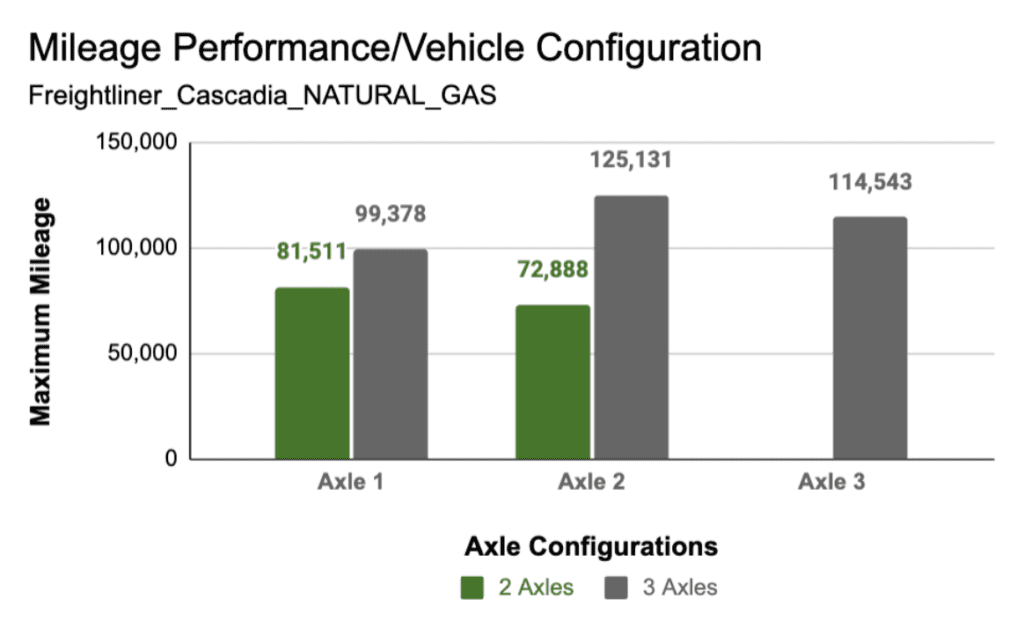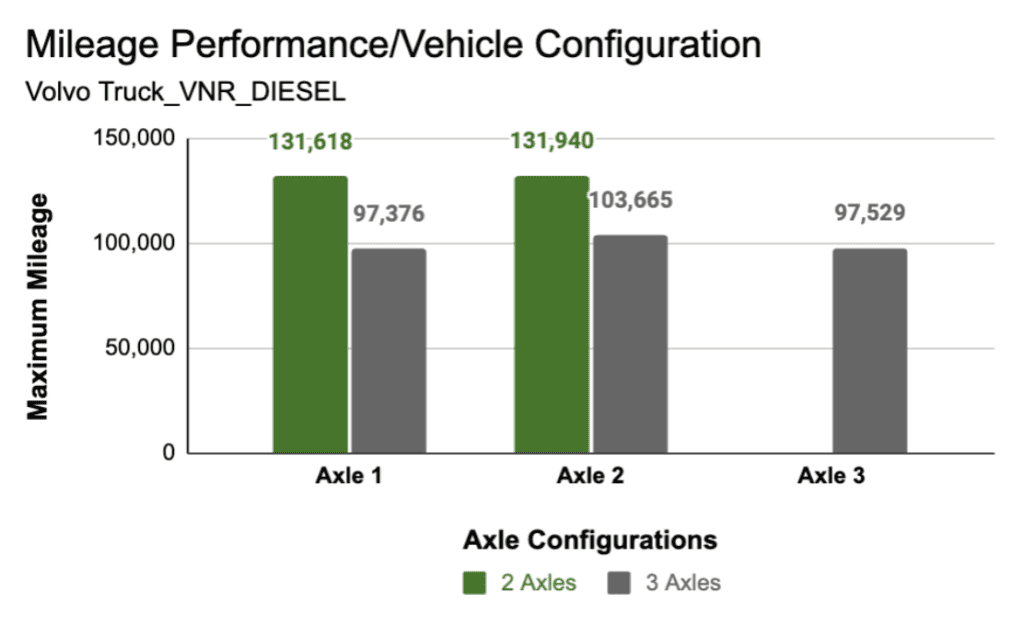Introduction
Does the number of axles affect truck mileage? How about fuel type: Can trucks get better mileage from natural gas instead of from diesel? This study reviews the mileage performance across a fleet of trucks from two manufacturers—Freightliner and Volvo— in two-axle and three-axle configurations. The following are key insights on fuel and maintenance, derived from tire mileage performance data that Revvo collected and analyzed.
The dataset for this study was obtained from a customer’s fleet subset operating primarily in the southeastern U.S. We selected this fleet because it operated consistently over 2 years, providing a comprehensive dataset for evaluating long-term performance and trends.
Revvo TireIQ, the AI-powered tire management platform, plays a critical role in enabling actionable insights for tire management and fuel savings. By providing real-time data and predictive analytics, TireIQ empowers customers to address tire issues proactively and optimize performance.
Understanding The Impact on Fuel and Maintenance
In this study fuel types were closely tied to the vehicle manufacturer. Freightliner primarily utilized natural gas, represented in the data by 26 vehicles, while Volvo predominantly operates on diesel, with 40 vehicles in the data set. Let’s look in more detail.
Freightliner (natural gas) – see Figure 1
With Freightliner, More Is Better.
Three-axle configurations outperform two-axle configurations across all axle positions, with a particularly notable performance on Axle 2. Specifically, vehicles with three axles achieve 72% higher mileage than similar Freightliner trucks with only two axles.
Better For Heavy Duty.
Three-axle Freightliner trucks are more efficient for maximizing mileage, making them the preferred choice for heavy-duty operations. Compared to Freightliner trucks with two axles, they deliver an average of 16% higher mileage per axle, enhancing overall fuel efficiency and performance.
On Freightliner, Fewer Axles Mean More Monitoring.
In Freightliner two-axle configurations, Axle 2 shows lower mileage, indicating the need for additional maintenance planning or load balancing. Fleet managers could prioritize three-axle configurations for Freightliner trucks to reduce downtime and improve vehicle longevity.

Volvo (diesel) – see Figure 2
With Volvo, Fewer Axles Mean Better Mileage.
Two-axle Volvo configurations outperform three-axle Volvo configurations, achieving ~35% and ~27% greater mileage for the same duration of use on Axle 1 and Axle 2, respectively (Green columns in Figure 2). Two-axle trucks are more efficient than three-axle trucks, achieving an average of 19% higher mileage per axle.
With Volvo, Fewer Axles Mean Less Maintenance.
Fleet managers could reduce operational costs by leveraging two-axle Volvo trucks, as their higher mileage reduces the frequency of tire replacements, axle maintenance, and fuel expenses.

Applying These Insights
Configuration Preferences.
Freightliner (natural gas) trucks perform better with three-axle configurations, while Volvo (diesel) trucks are more fuel efficient with two-axle configurations for maximizing mileage:
Axle 2 Performance.
Axle 2 performs better on mileage in three-axle configurations for the Freightliner, potentially due to favorable load distribution or operational factors specific to the middle axle.
Fleet Allocation Optimization.
Two-axle Volvo trucks should be assigned to routes requiring maximum mileage efficiency (e.g., long hauls or operations with lower gross vehicle weight).
Tire Management Strategies.
Fleets should adopt measures such as optimum inflation, alignment, and load balancing to extend tire life across all axle configurations.
Fuel Savings Tracking.
Fleets could also implement systems to monitor fuel consumption across vehicle configurations, enabling cost-efficiency assessments and targeted fuel-saving strategies.
Want to learn in-depth recommendations for using Revvo TireIQ to optimize tire pressure/alignment/tread depth, detect leaks, and more? Read this useful detailed analysis from the Revvo Data Insights team.



